Amplitude vs Mixpanel: Which one to choose?

Updated: October 11, 2024
15 min read
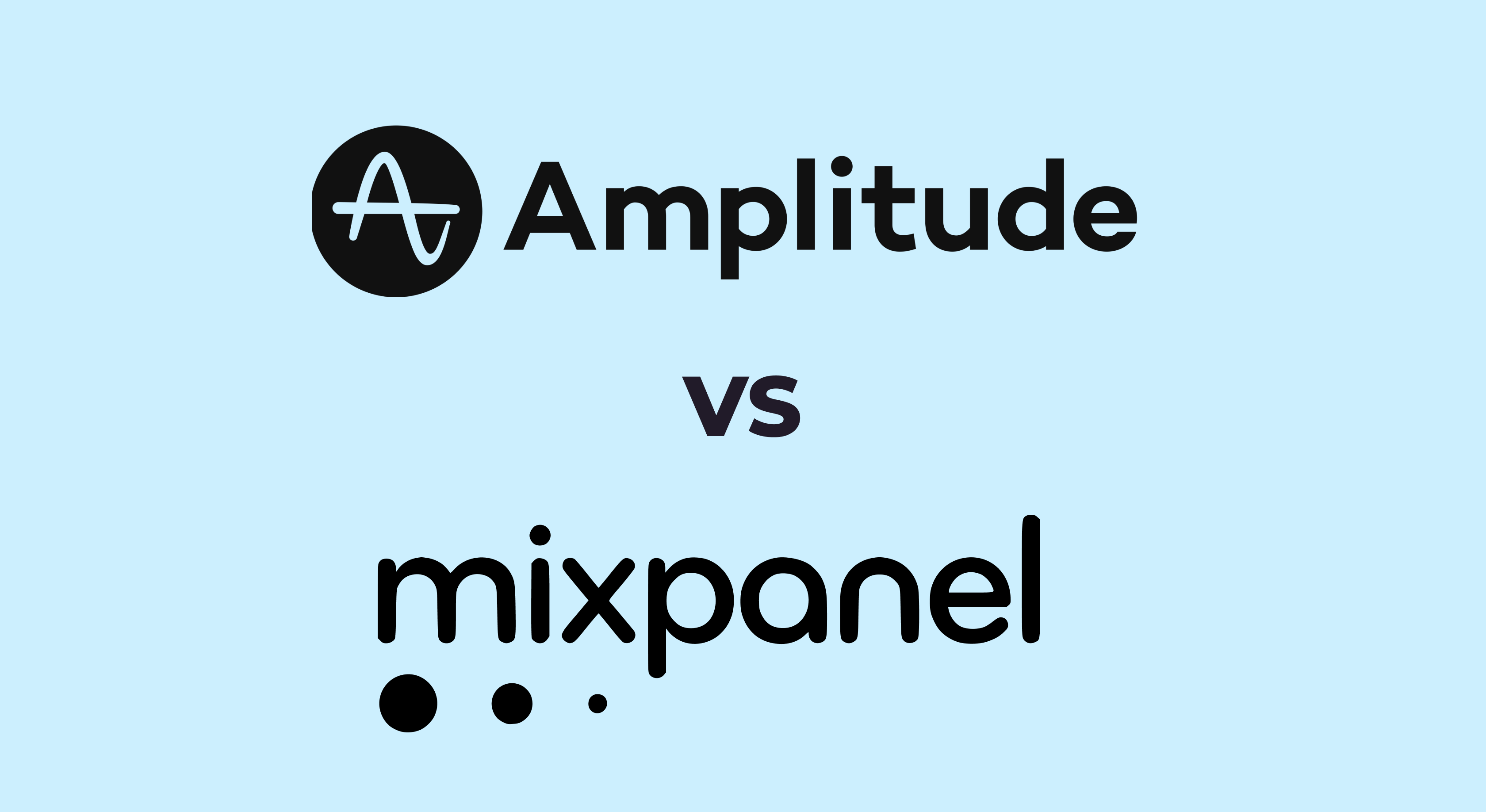
In order to understand how your product, and business in general, performs, it’s vital to get the handle of the processes that go in between the stages of creating the product and getting paid for it. That’s what analytics systems are for: they help you understand the customer behavior, build predictions, and, as a result, significantly affect the success of your product by using all the data gathered. But when it comes to choosing the right one for your business, it may not be that easy. There are many popular analytics systems on the market that at the first glance seem to offer the same tools and features, that makes it difficult to find which one would work best for you.
In this article we’ll take a look at two of the most popular solutions for working with analytics – Amplitude and Mixpanel. These systems are widely used by different types of companies, from startup mobile apps to huge e-commerce platforms, so you’re sure to find which one suits you most. It’s not by chance these two systems are popular with the customers, as they provide accurate analytics, present user-friendly reports, and have many tools for advanced exploration. However, there’s always a place for difference, and that’s what we’ll try to focus on today. Let’s find out what makes these two systems unique, and how to make the right choice.

Introduction to Mixpanel
Mixpanel is a cross-platform analytics system that offers much more than just data analysis. It’s an all-in-one service that works great with analytics, but at the same time provides you with push notifications, marketing automation, and even CRM. As an analytics system, it perfectly tracks all the user events (e.g. sign-ups, page views, clicks, transactions, etc.) and presents them in user-friendly data reports. The analytics gathered can be used to create funnels and user cohorts for deeper understanding of your user base. Mixpanel was initially focused on mobile app analytics, meaning that everything concerning gathering data from your subscription-based app should work just fine, which adds points to it as a service mobile app developers should choose.

Introduction to Amplitude
As opposed to Mixpanel, Amplitude’s initial focus was on presenting the deepest and most precise product analytics, and so it remains to this day. You won’t find any notifications or marketing tools here – only quality reports of all kinds. The depths of the event-based data tracked you can dive in is truly remarkable. The downside to it is that Amplitude requires a lot of data to work properly, otherwise your results may be rather inaccurate. That’s why this analytics system is usually popular with huge businesses and enterprises that have at least several tens of thousands of MAU (monthly active users) and want to be in full control of their customer journey.

Differences Between Mixpanel and Amplitude
Based on what we’ve talked about in the introduction parts, you probably get the idea that these two analytics systems share some things in common, but sure have distinctive features that differentiate them from one another. So let’s have a look at what makes them unique and different.
Reporting and general workflow
Let’s face it, working with loads of data and graphs may be overwhelming. So for some it may be rather important to have a platform that doesn’t get you all confused and lost in numbers. In this case, Mixpanel is a winner: it provides you with a number of basic dashboards by default and allows you to create custom ones after you’ve got used to the interface.
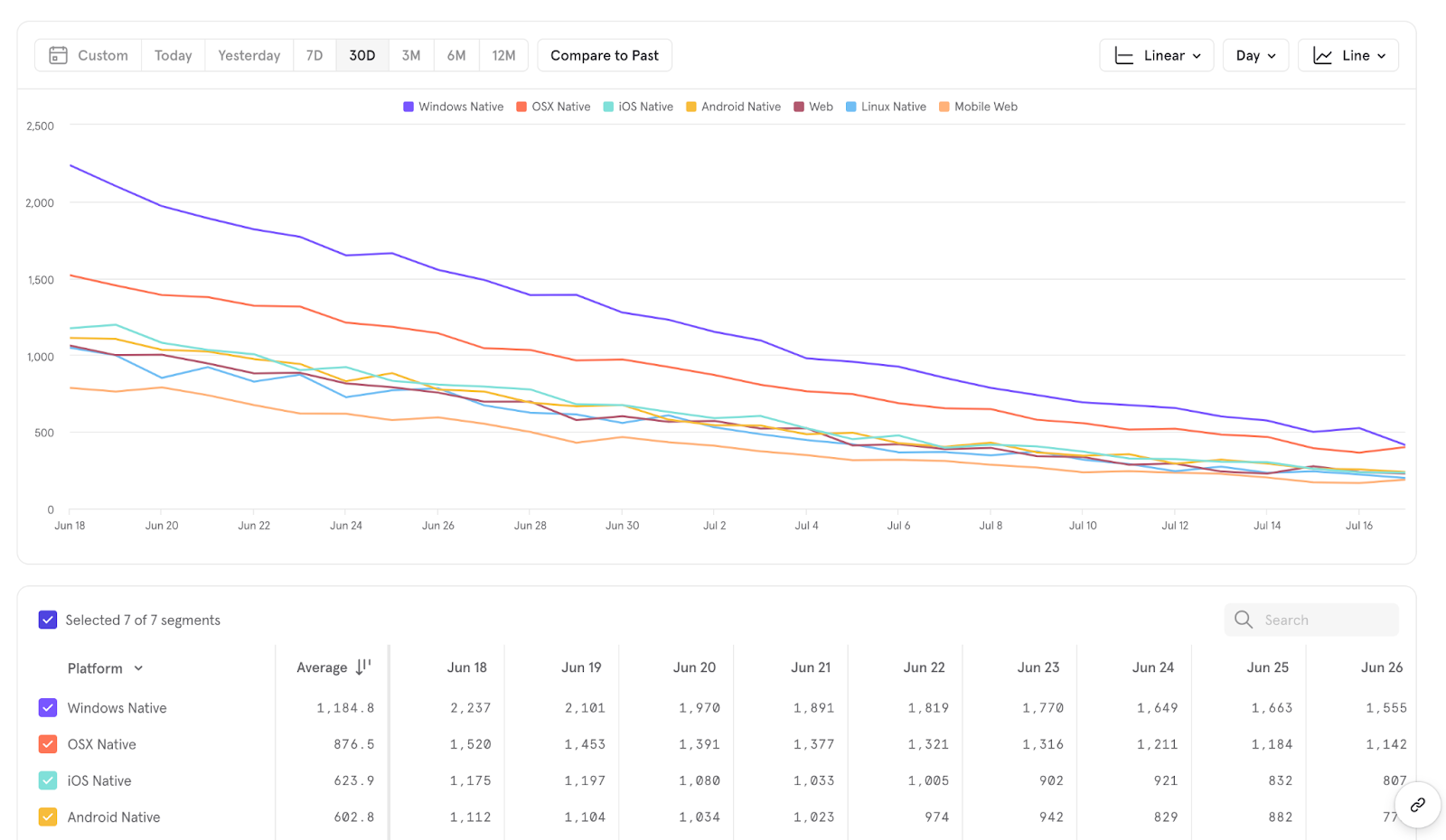
Amplitude, on the other hand, requires beforehand customization, which may be confusing for someone who’s new to the analytics world. But in its defense, Amplitude has way more flexibility and advanced reporting capabilities that we’ll talk about later.

Extra tools and integrations
As we’ve already mentioned, Mixpanel is not just a reporting system, it’s a full-fledged platform that, apart from just showing data, allows you to take certain actions with it. Here’s the list of what can be found only in Mixpanel:
- Integrations with HubSpot, Salesforce, and Zapier.
- Marketing automation suite that practically turns Mixpanel into a CRM.
- Built-in notifications (via SMS, email, or push).
- A/B Testing for mobile apps, although providing mostly basic functionality.
Mixpanel is a clear winner in this “arms race”, however, we once again see that Amplitude stands its ground in being the analytics system only, without trying to spray itself too thin, which is still appreciated.
Main and advanced reports
In this one we have to speak about similarities first, as the core reporting features in the two systems are basically the same. Both Mixpanel and Amplitude offer detailed reports on Segmentation (segment your data by certain user or event properties, like age, location, etc.), Funnels (check what’s going on at every stage of the buying cycle), and Retention (see the user engagement over a particular time period). All of them can be visually presented in the way convenient to you, let it be tables, bars, or something else. So these main reports are more or less similar for both systems, maybe with slight deviations.
Even some of the advanced reports look similar, just named differently:
- Flows, Signal, Impact, and Cohorts for Mixpanel,
- Pathfinder, Compass, Impact, and Cohorts for Amplitude, correspondingly.


However, this is where Amplitude gets far ahead of its competitor with much more to offer in terms of deeper advanced reports. Here are the most popular ones:
- The Lifecycle chart that shows how your product’s user base grows over time. In this report, your users are broken down into subgroups: new, current, resurrected, inactive, and dormant.
- The Personas chart that divides users into separate clusters based on the similarities of their event behavior. This chart is a more advanced version of the behavioral cohort, but in this case, there’s no explicit, pre-specified rule that defines a cluster.
- The Stickiness chart that helps you see how often your users are repeating the same event within a specific period of time. It’s great for understanding popular scenarios and enhancing them.
This is definitely the field where Amplitude manages to compensate for the Mixpanel’s extra tools, if the advanced reporting is what you’re interested in when choosing an analytics system.
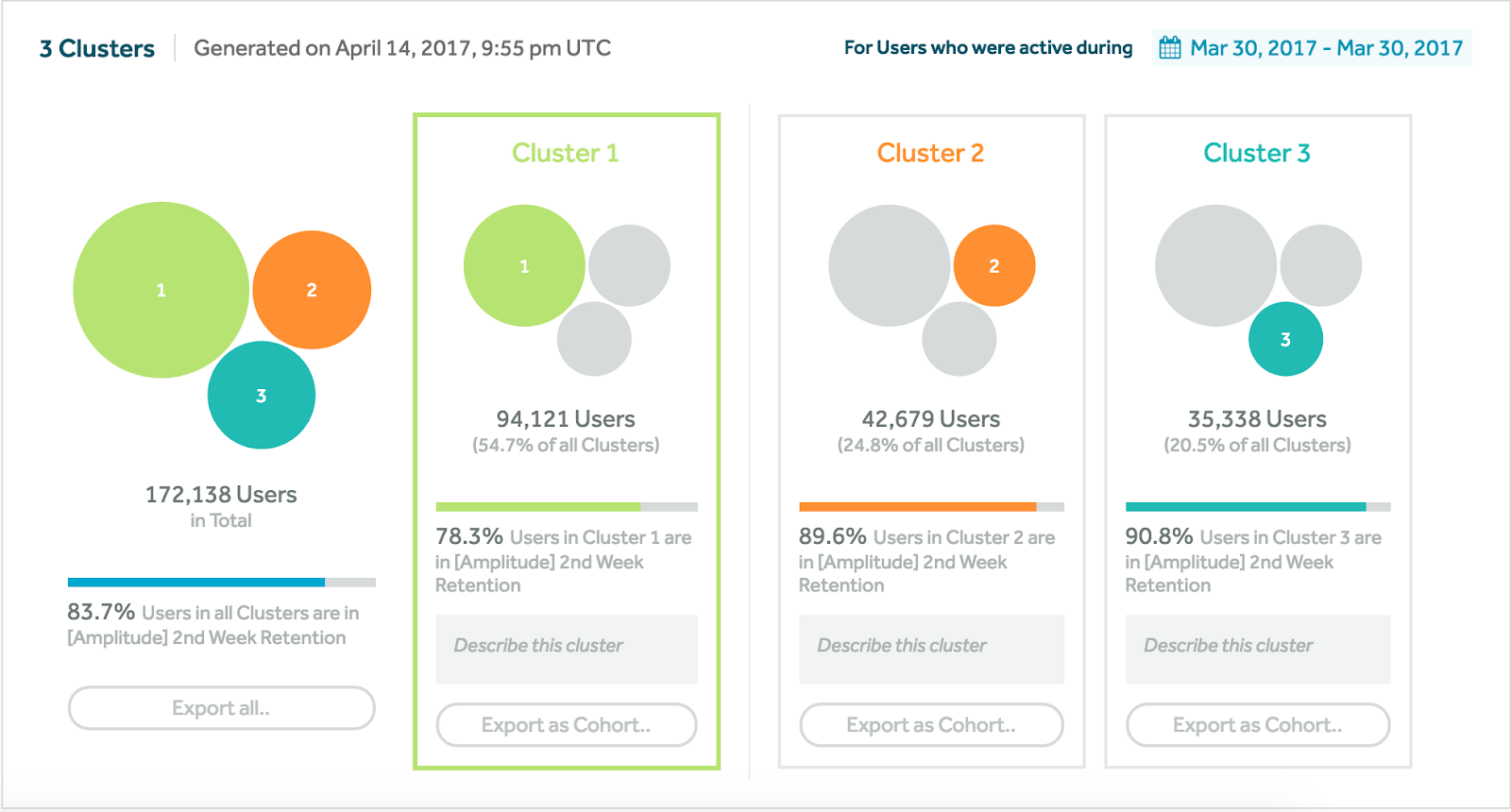
2024 subscription benchmarks and insights
Get your free copy of our latest subscription report to stay ahead in 2024.
Amplitude vs. Mixpanel: Pricing
Pricing is pretty important when you get to choose any service for your business, and with analytics systems it’s no different. If you look at the pricing pages of both Amplitude and Mixpanel, they look almost like siamese twins at the first glance, offering the free plan, the growth plan, and the enterprise one. But the difference is in the details.
Free plans
Both platforms provide free plans that offer the essential features you may need to try the product and understand if it works for you. What we should focus on is that they both offer basic reports (we discussed them earlier), unlimited number of seats (accounts that can use it within one company), and a certain number of tracked events per month. And this is where it gets pretty tricky. Amplitude lets you track up to 10M events per month, which is more than enough for a growing business that is just trying to get into the world of analytics. Mixpanel, in its turn, offers 100k monthly tracked users with 1,000 tracked events per user. If multiplied, it equals 100M events per month, but the thing is – the limit of 1,000 events per one user is really not much, or even not enough sometimes. So despite having bigger numbers on paper, Mixpanel is not your choice if you plan on sticking to the free plan for a long time.

Growth and Enterprise plans
If Amplitude is the more beneficial choice in terms of free plans, Mixpanel wins the race of the paid plans. First of all, it lets you create your own Growth plan right on the site, where you can state the number of monthly tracked users that you need and not overpay. And if the MTU number gets higher afterwards, the analytics will still work but you’ll have to pay some additional data rate fee the following month. The plan states $25 as the basic price, but it works only for 1k MTU with annual billing, so if you want to pay monthly – 1k MTU will cost you $36. With this plan you get some advanced analysis, unlimited data exports, and email support. But it’s important to note that the limit of 1,000 events per user and 100k MTU still remains even for the growth plan, which is a downside to pretty decent pricing. If you want to have no limits and create a plan which covers all of your needs – go with the Enterprise plan, but bear in mind that the starting price would be around $2,000 a month.
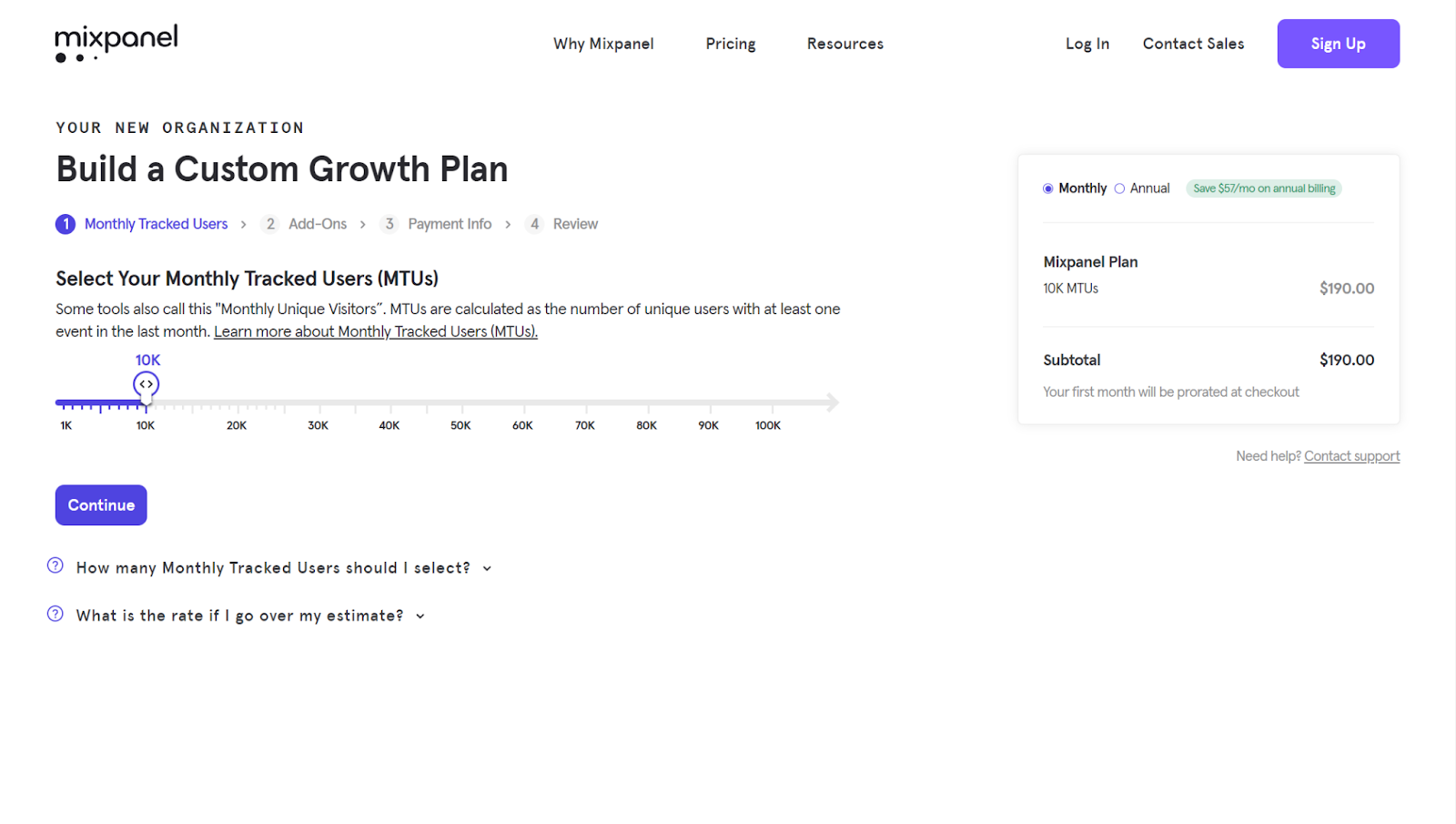
So if the Mixpanel’s growth plan still turns out to have certain limits and issues, why call it the winner? Well, because with Amplitude you don’t even get to understand how much its Growth plan would cost you. To get even the most basic paid plan you have to contact the sales team and discuss everything, which is far from being convenient. Moreover, based on the public info, the average price for the Growth plan is around $1,500/month, which is much more than the Mixpanel’s highest bar in this plan ($1,190/month for 100k MTU). It’s another indication of Amplitude primarily aiming at more or less mature companies that can afford to spend money on analytics. The features Amplitude offers you with the Growth plan mostly include advanced behavioral analysis, customer support, and a few may-be-useful features, but still with no limitations of the monthly tracked event number. The Enterprise plan, of course, gives access to everything there is in the platform but, it looks like the pricing of this one is actually affordable to huge enterprises only.
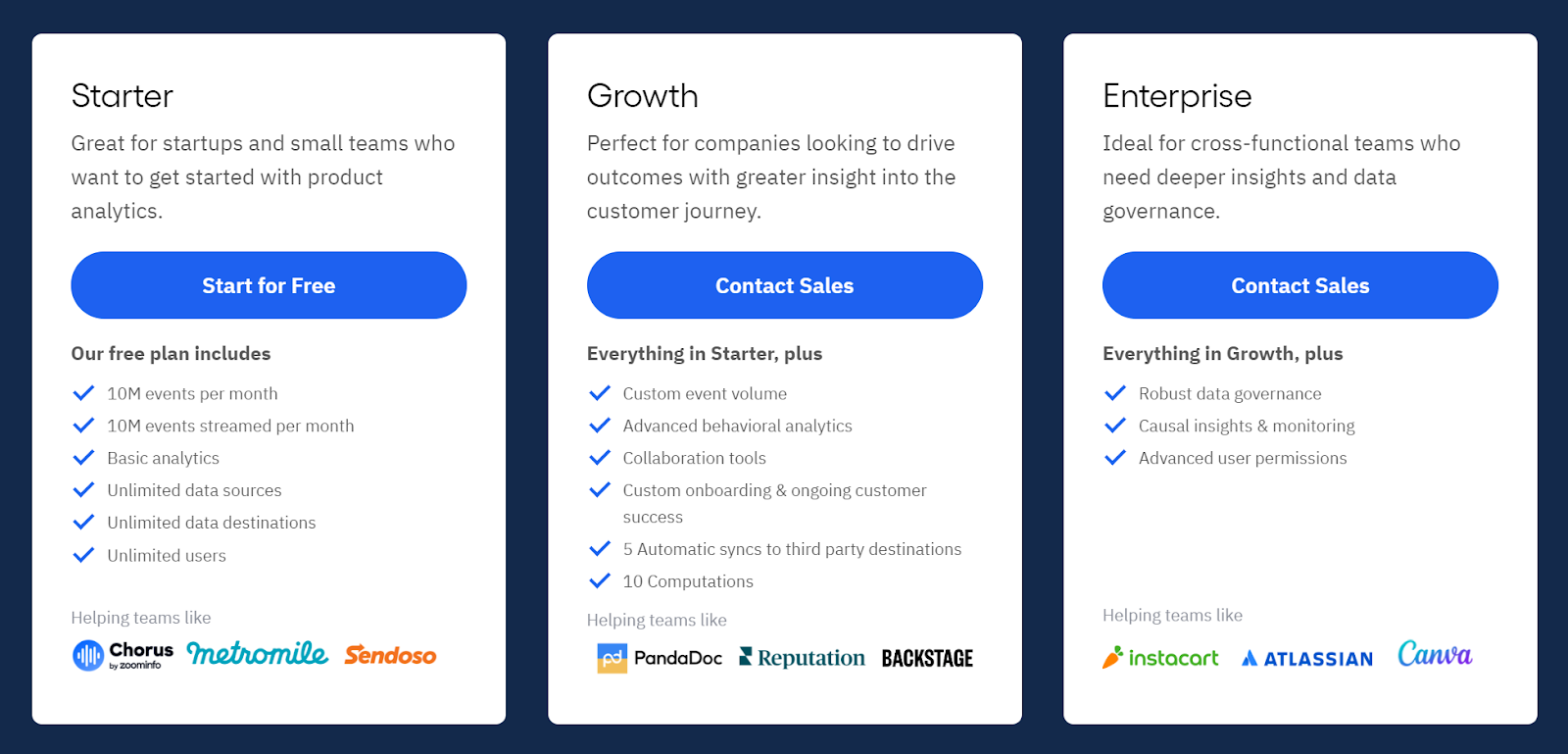
Conclusion – Amplitude or Mixpanel?
Let’s sum up everything we talked about and try to draw some kind of conclusion. Both Amplitude and Mixpanel are powerful and efficient analytics systems that are sure to cover your basic analytical needs and can offer even more advanced features, but of different kinds each.
Amplitude
Pros
- Focuses mainly on analytics: offers detailed basic and deep advanced reports.
- Some advanced reports are available on the Free plan, like Lifecycle and Stickiness.
- Offers 10M monthly tracked events on the Free plan, which is great for starters.
Cons
- Doesn’t have any integrations or marketing features.
- Rather expensive even on the Growth plan.
- Requires a lot of data to build reports properly.
Mixpanel
Pros
- Provides integrations and extra tools, like A/B testing and notifications.
- Offers much more affordable paid plans, which is good for business.
- Takes a more user-friendly approach with ready-made basic dashboards.
Cons
- Offers 100k MTU with only 1,000 events per user even on the Growth plan.
- Doesn’t provide advanced reports as deep and diverse as Amplitude does.
- Some advanced reports are available only on the Enterprise plan.
If you’re making your first steps with analytics, don’t want to spend a lot of money on the platform, and can’t boast having tens of thousands of active users – definitely go with Mixpanel. You’ll be able to get proper basic reports for free, and if you decide to stay, it won’t hurt your budget much to turn to the Growth plan. Plus, you’ll get many perks and marketing features that can be helpful for any business.
But if you want deeper analytics with extremely customizable dashboards and have more than 10,000 MAU – Amplitude is what you need. You’ll be able to test it to the limit with the Free plan and negotiate the best conditions for your business with any of the paid plans.
If you’re an app developer trying to add analytics to your own application, you may consider an alternative option, like Adapty. It’s a low-code server-side platform for in-app subscription integration and mobile analytics. Primarily it helps you effortlessly integrate subscriptions into your app and adjust accurate analytics in a few hours. As well as Amplitude or Mixpanel, Adapty tracks all the events and presents them in user-friendly dashboards, including Funnels, Cohorts, and numerous mobile metrics. In addition to that, you get versatile paywall A/B testing tools and integrations with numerous 3rd-party services, including both Amplitude and Mixpanel – in case you want to use their advanced tools. Adapty also provides the Free plan, so make sure to check what it has to offer.
Recommended posts
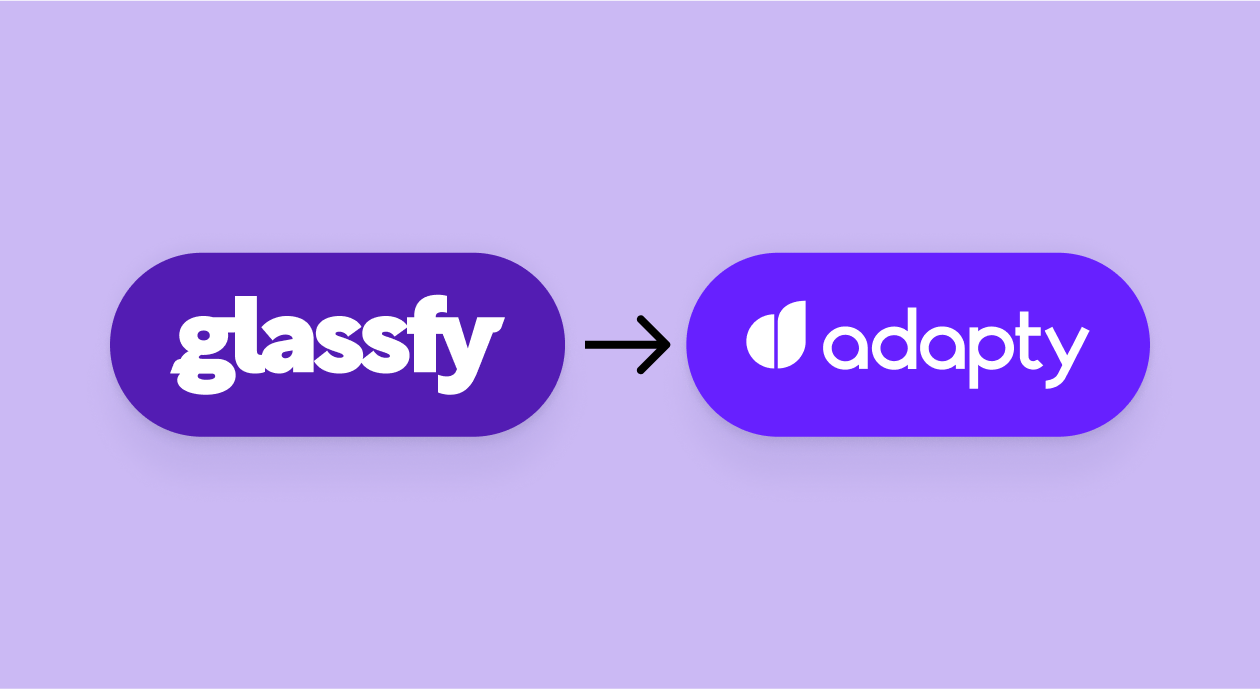
Tutorial
Product-releases
4 min read
August 1, 2024






